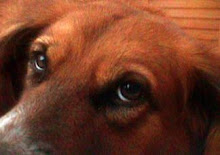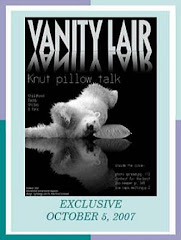 OK, ich gebe es zu, das Logo für Trecking- und Hikingtrips ist noch nicht fertig..., dennoch - heute möchten wir Ihnen eines unserer beliebtesten Angebote vorstellen - Wandern für Debutanten ...Wer gerne mal aus seiner Höhle heraus und sich frische Luft um die Nase wehen lassen will, beste Wanderzeiten für Einsteiger: Februar und März. Einzel-oder Kleinstgruppenbetreuung sind selbstverständlich, Last-Minute-Buchungen dürften zwar manchmal unser mit dem leiblichen Wohl beauftragtes Catering Service-Outdoorteam überraschen, unser international geschultes, weltoffenes Betreuerinnenteam jedoch ist auf alle Eventualitäten bestens vorbereitet und wird auch den Bedürfnissen der Unerfahrensten und Jüngsten gerecht. Reservierungen so früh wie möglich, Buchungen sollten im November und Dezember abgeschlossen sein, Kapazitäten für Last Minute jedoch, wie gesagt, vorhanden. Keinerlei Geschlechtsbegrenzungen, Mädchen sollten jedoch darauf eingestellt sein, dass jeder Schritt in Bild und Ton festgehalten, nach Bärlin und andere in Frage kommende Honeymoon-Destinationen übermittelt wird, eventuelle Karriere als Traumfraumodell mit Anspruch auf beste Gehegebedingungen nicht ausgeschlossen! -
OK, ich gebe es zu, das Logo für Trecking- und Hikingtrips ist noch nicht fertig..., dennoch - heute möchten wir Ihnen eines unserer beliebtesten Angebote vorstellen - Wandern für Debutanten ...Wer gerne mal aus seiner Höhle heraus und sich frische Luft um die Nase wehen lassen will, beste Wanderzeiten für Einsteiger: Februar und März. Einzel-oder Kleinstgruppenbetreuung sind selbstverständlich, Last-Minute-Buchungen dürften zwar manchmal unser mit dem leiblichen Wohl beauftragtes Catering Service-Outdoorteam überraschen, unser international geschultes, weltoffenes Betreuerinnenteam jedoch ist auf alle Eventualitäten bestens vorbereitet und wird auch den Bedürfnissen der Unerfahrensten und Jüngsten gerecht. Reservierungen so früh wie möglich, Buchungen sollten im November und Dezember abgeschlossen sein, Kapazitäten für Last Minute jedoch, wie gesagt, vorhanden. Keinerlei Geschlechtsbegrenzungen, Mädchen sollten jedoch darauf eingestellt sein, dass jeder Schritt in Bild und Ton festgehalten, nach Bärlin und andere in Frage kommende Honeymoon-Destinationen übermittelt wird, eventuelle Karriere als Traumfraumodell mit Anspruch auf beste Gehegebedingungen nicht ausgeschlossen! -OK, I admit it, the logo for Trecking-and Hiking trips is not ready yet - anzway, today we would like to direct your attention to one of our most popular offers - Walking for Debutants ... Who wouldn't like to get off a cave in exchange for some fresh air around a tiny nose, best times for beginners: February and March. Our services consists of either individual or small group care, last-minute-bookings may sometimes come as a surprise for our outdoor catering teams in charge for the physical well-being, however, our internationally trained and cosmopolitan female tutor teams, are well prepared for all eventualities and will meet even the needs of the youngest and most inexperienced. Reservations should be made as early as possible , to be completed in November and December ; as already mentioned, capacity for last minute exists. As to gender, both sexes are equally welcomed, however, girls should be prepared that each step made by them might be video taped and transmitted immediately to Bearlin or other potential honeymoon destinations. Later career as lady of one's dreams or top modell by best enclosure conditions not excluded!
 Unser heutiges Feature führt Sie ins nördliche Japan, in den Sapporo Maruyama Zoo. Erleben Sie hier die Unvergleichlichkeit einer Gruppenerfahrung unter Gleichaltrigen unter den aufmerksamen Augen unserer beliebten Betreuerin vor Ort, Rara, die auch schon in der Vergangenheit wertvolle Erfahrungen sammeln konnte, die sie hier mit einbringt. Im abgebildeten Beispiel fand die Buchung übrigens am 9.Dezember 2008 statt, allerdings für einen Botschafter, erst später erreichte uns eine Last Minute Buchung, die wohl irgendwie vorher in unseren Aufzeichnungen nicht dokumentiert war. Aber Flexibiltät ist alles und so wurde die Gruppengröße rasch heraufgestuft... -
Unser heutiges Feature führt Sie ins nördliche Japan, in den Sapporo Maruyama Zoo. Erleben Sie hier die Unvergleichlichkeit einer Gruppenerfahrung unter Gleichaltrigen unter den aufmerksamen Augen unserer beliebten Betreuerin vor Ort, Rara, die auch schon in der Vergangenheit wertvolle Erfahrungen sammeln konnte, die sie hier mit einbringt. Im abgebildeten Beispiel fand die Buchung übrigens am 9.Dezember 2008 statt, allerdings für einen Botschafter, erst später erreichte uns eine Last Minute Buchung, die wohl irgendwie vorher in unseren Aufzeichnungen nicht dokumentiert war. Aber Flexibiltät ist alles und so wurde die Gruppengröße rasch heraufgestuft... -Today's feature takes you to northern Japan, to the Sapporo Maruyama Zoo. Here you can share the unparalleled experience of a peer group under the watchful eyes of our popular entertainer on the spot, Rara, who brings in valuable experience from the past, having already been involved in similar events. In the example found on the way, the booking took place on 9 December 2008, however, announced was an ambassador, later reached us an additional last minute booking, which must somehow have not shown up in our previous records. But as to our agency, flexibility is everything and so the group size was rapidly increased ...
Finden Sie hier wervolle Informationen zum Reiseland aus unserem Katalog, zusammengestellt von unserem Außendienstteam vor Ort/Stand Dezember 2008/leider nur auf Englisch -
Please find here some valuable information concerning the hiking destination as provided by our local outdoor operators/ as of December 2008:
About 50 polar bears are currently raised in Japan, and only two little bears have been born successfully by natural reproduction since 2000: Tsuyoshi, born in December 2003 (female, now bred in Kushiro Zoo, in Hokkaido), and Pirka, born in December 2005 (female, now bred in Obihiro Zoo, in Hokkaido).
Both are the cubs of Maruyama Zoo’s Denali and Rara. Their births are of course the results of the affinity between the two parents and of the blessed fecundity of Rara, but also of the fact that the zoo’s staff is always anxious to maintain a good environment for bear mothers to give birth and raise their babies safely.
Sapporo is located at relative high latitudes in Japan, and in winter the weather is cold and snow falls and accumulates; that is why you can see polar bears living in a snowy environment. But, if a female is suspected to be pregnant, the bear enclosure and its surroundings are closed from falls to early spring, not only to public but also to the staff, in order to provide the mother a quiet environment. We can not
The number of polar bears is declining because of noxious chemicals, climate change and hunting, and they have been added as vulnerable (VU) to the 2006 red list of the International Union for Conservation of Nature (IUCN).
We can take for granted that the main reason why this beautiful and brave bear became endangered is global warming, which is caused by the CO2 emissions due to humans’ industrial activities. There are several opinions on the causes and risks of global warming, but it is certain that the melting of the polar ice causes great damages to polar bears that hunt seals on sea ice.
Maruyama Zoo, like several other zoos in the world, has been entrusted the role of an animal ark that preserves endangered species and makes animals reproduce. Polar bears must be more protected.
Recently, some new born cubs gained publicity: Knut, born in December 2006 in Berlin (Germany), and raised by humans since he has been abandoned by his mother; two twins born in December 2007 in Wien (Austria); Flocke (female), also born in December 2007, and like Knut, raised by humans; two twins (one has passed away since) born in December 2008 in Alborg (Denmark).
A new snow-white baby cried for the first time in December 2008, here in Sapporo. The cub and its mother Rara are still retired in the maternity room, but you will be able to see the cute baby in the lasting snow of spring 2009. If this cub grows safely, it will become the third natural birth to succeed for Denali and Rara.
We would like this cub to become the ambassador of wildlife, the messenger of North Pole. We, the Maruyama Zoo’s staff, wish that seeing this cute little bear, people of the world will think about endangered animals, and about the impact of people’s way of living on wildlife.

原文
円山動物園では、現在3頭の成獣のホッキョクグマ「デナリ」(オス・1993年11月9日アメリカ合衆国ユタ州生まれ)「ララ」(メス・1994年11 月20日日本大分県生まれ)「さつき」(メス・1991年11月14日アメリカ合衆国オハイオ州生まれ)を飼育・展示しています。
ホッキョクグマは賢いうえにとても神経質な動物で、飼育下での自然繁殖はなかなか成功しません。
オスとメスの相性が合わずに交尾に至らなかったり、母熊が子育てを放棄してしまったり、といった例が多々あります。
ここ日本では、約50頭のホッキョクグマが飼育されていますが、西暦2000年以降、自然繁殖で無事成育したのは、たったの2頭だけです。2003年 12月に生まれた「ツヨシ」(メス・現在は北海道釧路市の動物園にて飼育)と2005年12月に生まれた「ピリカ」(メス・現在は北海道帯広市の動物園に て飼育)です。
どちらも円山動物園のデナリとララの間に生まれた子です。彼らの相性や、ララの母としての資質といった要素に恵まれたことももちろんですが、母熊が安心して子供を産んで育てられるよう、円山動物園では環境の整備にも気を配っています。
ここ札幌は、日本においては緯度の高い都市で、冬は寒冷で厚く雪が降り積もり、ホッキョクグマが雪のなかで過ごす姿を見ることができます。けれども、メ スが妊娠している可能性のある年は、秋から春先までクマの飼育舎の周囲を閉鎖して、お客さまだけではなく、職員も立ち入らず、静かな環境を母熊に提供して います。北極圏の氷原のように、とはいかないものの、母熊が極力落ち着いて妊娠の後期から子育ての初期にいたるまでを過ごせるように、できる限りの配慮を しています。
有害な化学物質や気候変動、狩猟のためにその数を減らし続け、ホッキョクグマは国際自然保護連合IUCN)が発行している、レッドリスト2006年版において、危急種(VU)と認定されました。
この美しく勇猛なクマが絶滅の危機に晒されている最も大きな原因は、人間の産業活動から排出されるCO2による地球温暖化である、という説が有力です。
地球温暖化については、その原因やリスクに諸説あるものの、氷海の上でアザラシを狩るホッキョクグマにとって、北極圏の氷の消失が大きなダメージとなることはほぼ間違いないでしょう。
円山動物園は、世界の多くの動物園と同じく、失われていく種を保存し、繁殖させる生物の箱舟としての役割を担っています。 ホッキョクグマは今最も守るべき種のひとつです。
世界の動物園においては、2003年時点の国際血統登録では、160施設、389頭(約400頭)が飼育され、年間数頭が生まれています。
最近では、2006年12月にドイツ・ベルリンで産まれ、育児放棄されたために人の手で育てられた「クヌート」(Knut)、2007年12月にオースト リア・ウィーンで産まれた双子、同じく2007年12月にドイツ・ニュルンベルクで産まれ、クヌート同様に人工飼育となってしまったメスの子「フロッ ケ」(Flocke)、2008年12月にデンマーク・オールボーで産まれた双子(うち一頭すでに死亡)が有名です。
そして2008年12月9日、ここ札幌で、真っ白な赤ちゃんが産声をあげました。お母さんのララと赤ちゃんはまだ産室にこもっていますが、2009年のまだ雪の残る春先、きっと可愛い赤ちゃんの姿をお目にかけることができるでしょう。赤ちゃんが無事に育ったなら、デナリとララの間での記念すべき3回目の自然繁殖成功例となります。その子には、野生からの大使、北極圏からのメッセンジャーとしての役割を担ってもらいたい、と考えています。 とてもキュートなその姿を見て、世界中の人々に、危機にさらされる動物たちのこと、そして彼らに影響を及ぼしている自分たちの暮らし方について、思いを馳せてみてほしい、それが円山動物園の願いです。
ホッキョクグマの毛を電子顕微鏡で見た画像
保温のために空洞になっている
彼らの体は北極圏の氷海で生きていくために特殊な発達を遂げた
The Japanese version is dedicated to Dostoy, our Japanese literate friend in Chicago...))
Photo credits:AP (1), Sankei (2)
Videos you will find here and here.., and here
Text source in English and Japanese here, related article in English here














































1 Kommentar:
Hugs and Kisses!
Kommentar veröffentlichen